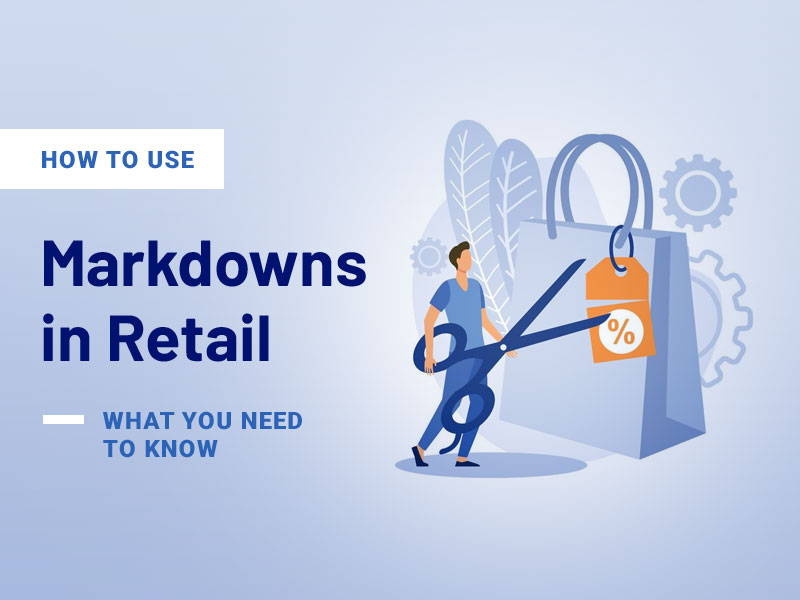All creative entrepreneur need problem-solving and innovative skills. Finding solutions or creating new possibilities is accomplished through problem-solving. The ability to produce something new based on acquired information is referred to as innovation.
Some professions specifically call for this kind of advanced problem-solving and innovative ability. And they generously compensate those who are up to the challenge. They include advertising and marketing, especially in the writing of content and copy.
Problem solvers and innovative people are also needed in architecture. art and design, such as product, graphic, and fashion design, as well as curators of art galleries.
Unexpected obstacles can be overcome and unusual difficulties can be solved with the aid of problem-solving. Innovative solutions to problems can lead to business growth. Identifying and solving problems provides businesses with the competitive advantage they desire. Individuals today with these skills are relevant in today’s job market.
The Role of the Creative Director
A creative director is responsible for leading the creative division in advertising and marketing agencies. They are responsible for creating brand standards, overseeing brand campaigns, and updating presentations.
They are well-known as art directors. A project’s overall design will be created by the art director, who will also give instructions to others on how to design layouts and artwork.
Art directing skills are needed to understand how to become an art director. Creative directors work closely with graphic design. They also work with marketing teams to produce engaging content that lives up to our client’s expectations. The following are the Roles of creative directors:
- Generating fresh concepts for business branding, advertising campaigns,
- Analyzing trends, evaluating fresh data, and being current with emerging marketing strategies.
- Assisting clients in finding solutions to problems by promptly responding to inquiries.
- Led creative sessions and brainstorming gatherings.
- Developing procedures and brand standards to make sure all items are in line with the brand.
- Managing the daily operations of the department. Also, allocating workloads for projects, and keeping an eye on budgets and deadlines.
- Creating excellent, expertly designed copy that satisfies customer needs.
- Education and experience requirements.
- A bachelor’s degree in a relevant discipline. Disciplines such as art, graphic design, marketing, communications, journalism, etc.
- At least five years of digital expertise, preferably with online, social, and new technologies.
How to Become a Successful Creative Director
To become a creative director you need certain skills to be hired by companies/industries like Amazon. Target. Ogilvy, twitter, Apple. etc. These skills include:
- A thorough knowledge of online standards, copywriting, and design.
- Excellent communication and interpersonal skills.
- Possess in-depth knowledge of multichannel marketing models and brand development.
- Must be able to think creatively and strategically.
Creative Entrepreneurship
Explanation of the opportunities available for creative entrepreneurs.
A creative entrepreneur takes up the risk of a company that focuses on artistic or creative projects and ideas. Creative entrepreneurs can disrupt many industries such as arts, teaching, and software development. Etc. They can be freelancers on sites like Fiverr, Upwork, Amazon, Etsy, and Zazzle.
To tap into these opportunities, it is important to conduct research. Also establish your company’s structure. Learn how to sell your company.
Tips for Starting Your Own Business
Be Passionate:
It’s crucial that you genuinely and intensely appreciate what you do. This is because you’ll be investing a lot of time and energy into beginning a business and turning it into a successful enterprise.
Start while you still have a job:
For how long can the typical individual exist without cash? Very brief. Additionally, it can take a while before your new company starts turning a profit. Having a job while beginning a business allows you to have cash on hand during the initial stages of operation.
Ensure that your offering is a necessity:
Your concept need not be original, but it must set you apart from your rivals. You must also be certain that people will purchase it if they truly need or want it.
Market knowledge:
Make the most of your research time. Learn about your market, the demand, and your rivals. Speak with prospective clients, vendors, rivals, distributors, and former rival personnel. Test the market and your idea.
Creating a business plan is crucial:
This is your route. A business plan should incorporate longer-term goals and forecasts as your business changes over time. If at all possible, every step should be quantified so that you can assess your achievement and, if necessary, get finance and support.
Make certain the funds are available:
If you have to, save money. Approach prospective lenders and investors. Create a backup financial strategy. It is absurd to think that you can start a business and then walk into a bank to ask for financing. Fresh ideas and businesses with a shaky track record are not popular with traditional lenders.
Don’t go it alone:
When beginning a business, you need a support network (and afterward). It is extremely helpful to have a family member or friend, or business partner.
Get professional assistance:
On the other hand, starting a business doesn’t require you to be an expert in every field. Hire a bookkeeper or an accountant. If you are not an attorney, have a lawyer draft your contract for you. You will ultimately waste more time and possibly money if you try to do things on your own that you are ill-equipped to do.
Be professional:
Everyone should be able to see that you are a professional running a serious business. This should be done by the way you conduct yourself and your firm. Obtaining all the necessary accessories, such as professional business cards, is required. Also get a business phone, and a business email address, as well as treating people with decency and professionalism.
Examples of Successful Creative Entrepreneurs and Their Unique Ventures
These successful creative entrepreneur transformed their industries and cultures. They amassed enormous riches and developed ideas that still have an impact on our daily lives.
- John D. Rockefeller: By most standards, John D. Rockefeller was the richest person in history. Through horizontal and vertical integrations that turned Standard Oil into a monopoly, he gained his wealth by squeezing out efficiencies.
- Henry Ford: The vehicle was not created by Henry Ford. He was a member of a team working on automobiles, though perhaps not the greatest. However, these rivals were charging prices that made buying an automobile a luxury for the wealthy.
- Bill Gates: When people think of Bill Gates, words like “wealthy,” “competitive,” and “clever” typically come to mind. Of the three characteristics, Gates’ competitive nature is what has made him wealthy. Gates developed Microsoft.
- Sam Walton: Sam Walton built a retail distribution system that no one had ever tried in a market that no one wanted. Walton was able to considerably reduce transportation costs while accelerating the delivery of goods to crowded outlets. He did this by constructing warehouses between a number of his Wal-Mart (WMT) locations.
- Steve Jobs: Steve Jobs helped build Apple, one of the few IT businesses that seriously challenged Microsoft’s hegemony.
- A. D. Carnegie Andrew Carnegie cherished effectiveness. Carnegie’s mills were always at the forefront of technology from the time he started in the steel industry. In every market slump, Carnegie bought up steel assets by combining his superior procedures with a keen sense of time.
Benefits and Challenges of Being a Creative Entrepreneur
The followings are the advantages and disadvantages of being a creative entrepreneur:
Advantages:
- a flexible work schedule, both in terms of your hours and your location.
- it’s thrilling and satisfying.
- rewarding professional.
- work-life independence.
- experience in leadership.
- work from any location.
- corporate command.
- adaptable timetable.
- establishing an advantageous network.
Disadvantages:
- increased personal accountability… Financial hazards…
- additional personal stress
- calls for a professional network.
- higher sacrifices and longer work hours are needed.
- rivalry with other reputable companies.
- you never stop working.
- other career paths for creative individuals.
Graphic Designer
Graphic designers employ their artistic skills to graphically convey messages. They create packaging, promotional displays, video games, websites, publications, and marketing collateral. They work for publishing houses, design studios, and advertising agencies.
Illustrator
A book’s illustrations are created by illustrators, who are also artists. Some authors of children’s books also work as illustrators, while others collaborate. Both the writing and the drawings in picture books must be excellent. An illustrator’s job is to convey the tale visually (or through illustrations).
Animator
Animators are creatives who create films for commercials, video games, music videos, and websites. They use sequential pictures of drawings, puppets, and models. Animators create films for major animation studios, production companies, and video game makers.
Photographer
A photographer is someone adept at using a camera to take pictures or photographs. A novice photographer captures images for personal use. A professional photographer’s primary or secondary duty is to take images. For their wedding, debutante ball, or other important events, many individuals hire photographers.
Writer
Those who write books, articles, stories, etc. are known as writers. Someone who puts their thoughts, ideas, etc. in writing is a skilled letter writer.
Game Designer
Practically every component of a video game is made by a game designer. These include its narrative, characters, and visual aesthetics. Designers come together in various teams to create an united vision.
A game designer helps develop ideas for character interactions and other imaginative elements. Collaboration with other experts, such as developers, artists, and others, is their duty. They coordinate projects by exchanging ideas and developing games.
Music Producer
They conduct recording sessions and make modifications to the words, effects, and instruments. assists the recording, mixing, and mastering engineers. establishes the vision and direction for each project while gathering inspiration and ideas.
Scenic Designer
The scenic designer is also referred to as the set designer. They are in charge of creating the scenery and, more broadly, the artificial setting for a stage, television, or film production.
Fashion Designers
Fashion designers create designs for apparel, accessories, and footwear. Original apparel, accessories, and footwear are produced by fashion designers.They create drawings, pick fabrics and patterns, and offer instructions for making the things they design.
Tips to Develop Your Career as a Creative Entrepreneur
- Constructing a portfolio
- Networking
- Continual learning
- Keeping up on market trends
- Acquainting yourself with the commercial aspects of a creative endeavor
- Getting seen in a crowded market
Conclusion
You may raise the standard of your own life by being creative. People that are adept at solving difficulties through creativity will frequently “think beyond the box“. They are not restricted to following a set of rules. For these people, following conventional wisdom won’t yield the desired outcomes.
Employers prefer to see effective problem-solving and innovation skills. This is because they demonstrate qualities, including logical thinking, creativity, and imagination.
Numerous new businesses and other sorts of creative entrepreneur provide a range of job opportunities for creative and problem-solving people. They are needed in professions like a makeup artist, copywriter, illustrator, and interior designers.







